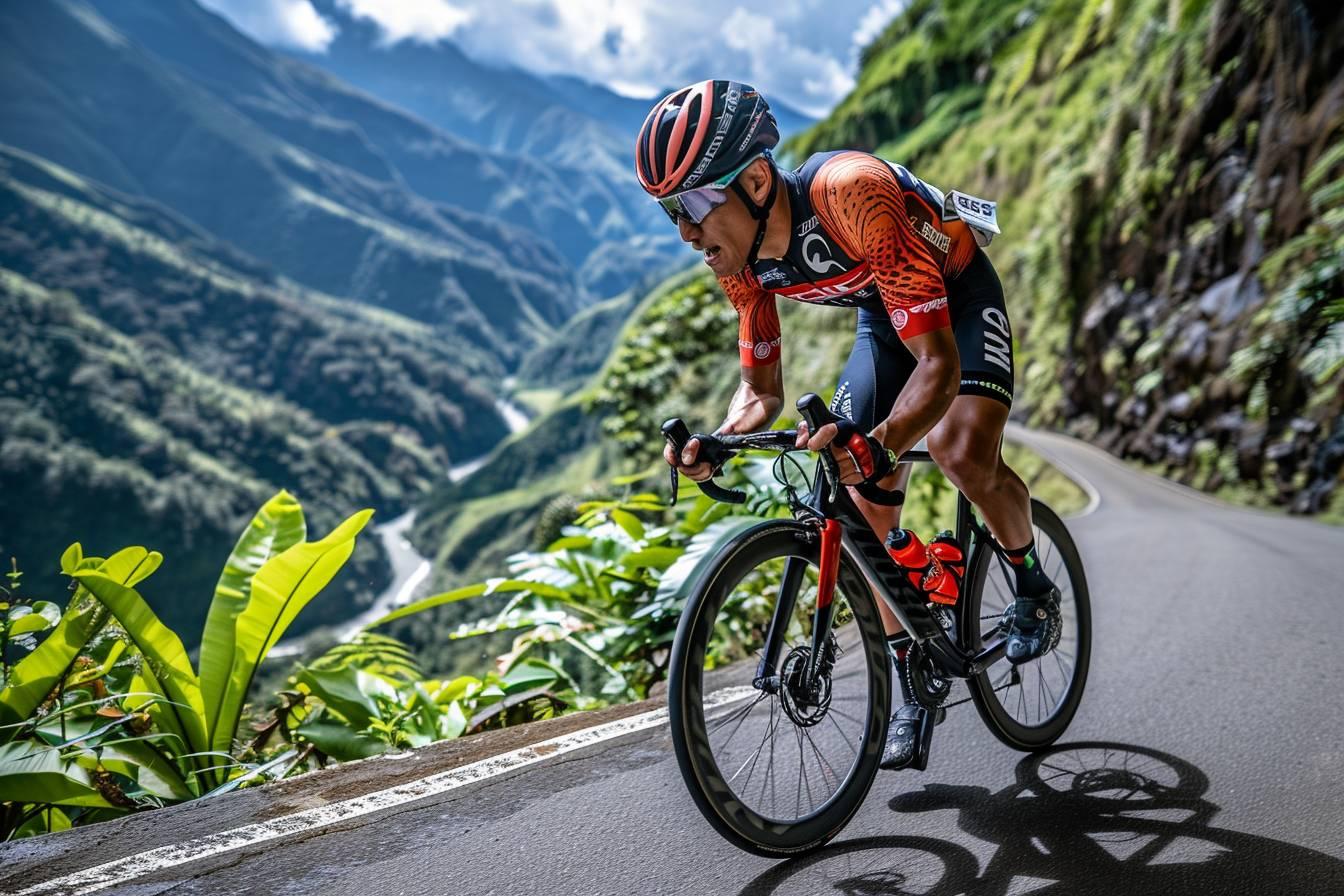The Tour de France, cycling’s most prestigious race, covers approximately 3,300-3,500 kilometers over three weeks. Here’s a brief overview :
- Distance evolution : From 5,000+ km in early editions to a more balanced 3,400-3,500 km today
- Structure : 21 stages over three weeks, including flat, hilly, mountain stages, and time trials
- Factors influencing length : Rider safety, exciting racing, technological advancements, and TV coverage
- Annual variations : Route design considers geography, difficulty, history, logistics, and spectator experience
The Tour de France, cycling’s most prestigious race, captures the imagination of sports fans worldwide. Its grueling length and challenging terrain test riders’ endurance and skill over three weeks of intense competition. But just how long is the Tour de France, and how has its distance evolved over time ? Let’s explore the fascinating details of this iconic race’s duration and distance.
Tour de France distance : Past and present
The length of the Tour de France has varied significantly throughout its history. In the early days of the race, during the 1920s to 1980s, the Tour often covered staggering distances exceeding 4,000 to 5,000 kilometers. These epic journeys pushed riders to their absolute limits, creating legendary tales of endurance and perseverance.
However, in recent years, organizers have aimed for a more balanced approach. The current Tour de France typically covers a distance between 3,300 and 3,500 kilometers. This “happy medium” strikes a balance between maintaining the race’s challenging nature and considering the capabilities of modern cyclists.
To put this in perspective, here’s a brief overview of recent Tour de France distances :
- 2024 edition : 3,492 km (2,169.8 miles)
- 2023 edition : 3,406 km
- 2022 edition : 3,328 km (shortest recent Tour)
- 2014 edition : 3,661 km (longest recent Tour)
Interestingly, the 2024 Tour de France will be the longest of the three Grand Tours that year, showcasing its continued prominence in the cycling world.
Stages and structure of the race
The Tour de France is not just about the total distance covered; it’s also about the structure of the race itself. The modern Tour typically consists of 21 stages spread over three weeks, with two rest days interspersed to allow riders some recovery time.
These stages are carefully designed to challenge riders in various ways :
- Flat stages : Ideal for sprinters
- Hilly stages : Favoring breakaway specialists
- Mountain stages : Testing climbers and overall contenders
- Time trials : Showcasing individual racing against the clock
The length of individual stages can vary significantly. Some stages may exceed 200 kilometers, while others are intentionally shorter to encourage aggressive racing. This variety adds to the tactical complexity of the Tour and keeps both riders and spectators engaged throughout the three-week event.

Evolution of the Tour’s distance
The Tour de France distance has undergone a fascinating evolution since its inception. In the early 1900s, the race was surprisingly short by today’s standards, covering less than 3,000 kilometers. However, these early editions consisted of only six extremely long stages, creating a very different racing dynamic.
As the Tour gained popularity and prestige, its distance increased dramatically. The race reached its peak length during the mid-20th century, with some editions covering truly epic distances. However, since the 1980s, there has been a general trend towards shorter overall distances.
This gradual reduction in distance reflects several factors :
- Increased focus on rider safety and well-being
- Desire for more exciting, attacking racing
- Advancements in training and equipment technology
- Changes in public expectations and television coverage
To illustrate this evolution, here’s a table showing the average Tour de France distances by decade :
| Decade | Average Distance (km) |
|---|---|
| 1910s | 5,200 |
| 1920s | 5,400 |
| 1930s | 4,800 |
| 1950s | 4,500 |
| 1980s | 3,900 |
| 2010s | 3,500 |
| 2020s | 3,400 |
Factors influencing Tour de France length
The exact distance of the Tour de France changes each year based on various factors. Race organizers must consider a complex mix of elements when designing the route :
- Geographical considerations : Incorporating diverse regions of France and occasional forays into neighboring countries
- Balancing difficulty : Ensuring a challenging yet manageable course for riders
- Historical significance : Visiting important locations or commemorating cycling history
- Logistical constraints : Managing the massive caravan of riders, support staff, and media
- Spectator experience : Creating exciting viewing opportunities for fans along the route
- Television coverage : Designing stages that translate well to broadcast audiences
These factors combine to create a unique Tour de France experience each year, with subtle variations in distance and difficulty. While the overall length may fluctuate by a few hundred kilometers from one edition to the next, the core essence of the race remains consistent – a grueling test of endurance, strategy, and skill over three unforgettable weeks in July.
As cycling enthusiasts eagerly anticipate each Tour de France, they can expect a race that covers approximately 3,500 kilometers of breathtaking French landscapes. This carefully calibrated distance ensures that the Tour remains the ultimate challenge in professional cycling, captivating audiences and pushing riders to their limits in the quest for the coveted yellow jersey.
